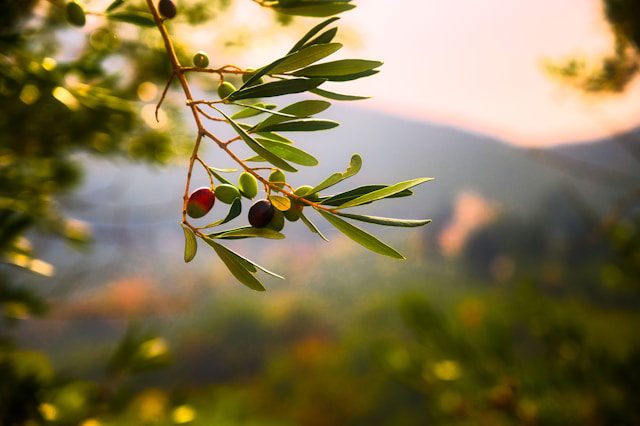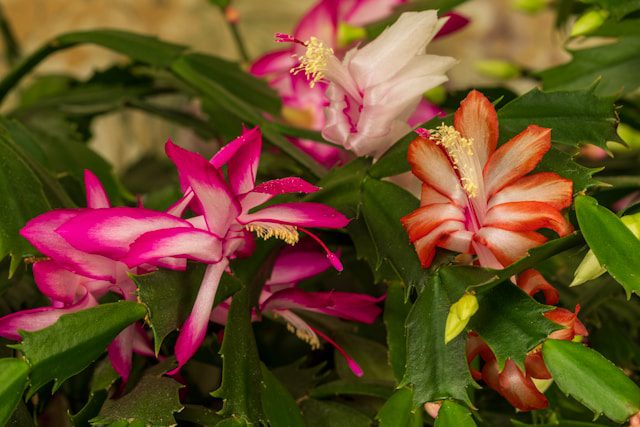Some links on this Website are affiliate links, meaning we may earn a commission if you make a purchase, at no additional cost to you. Please read our full Affiliate Disclosure for more details.
Olive trees have become one of the most loved houseplants and garden trees worldwide, thanks to their Mediterranean charm, evergreen leaves, and surprisingly hardy nature. But while olive trees may look low-maintenance, they do have specific needs that determine how healthy, lush, and productive they become.
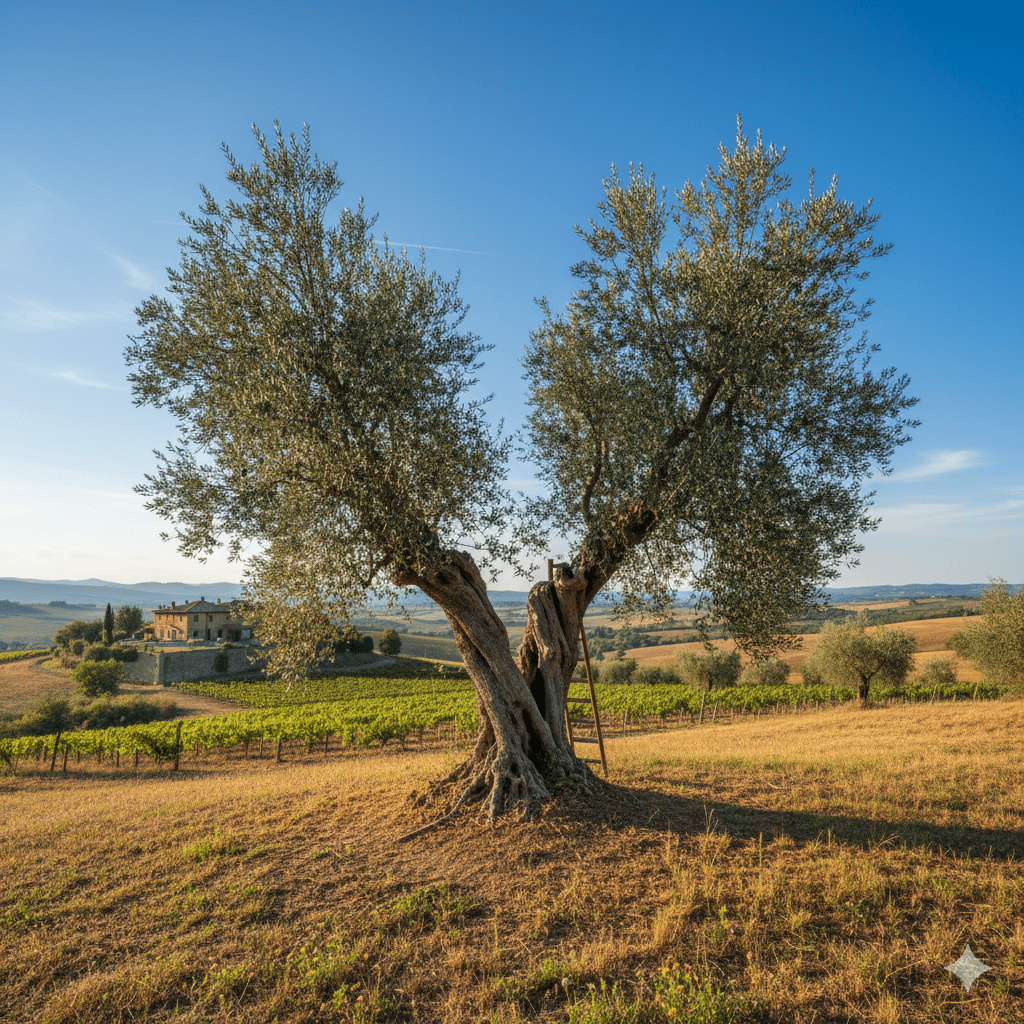
Whether you’re growing yours in the garden or keeping it indoors as a decorative plant, understanding the right olive tree care tips will help you avoid common issues like brown leaves, poor growth, and lack of fruiting.
This guide walks you through everything you need to know, from watering, pruning, soil requirements, and indoor positioning to outdoor care and seasonal maintenance.
Indoor Cactus Care Tips for Beginners
Essential Olive Tree Care Tips
Olive trees are naturally resilient, but they thrive best under conditions that mimic the warm, dry Mediterranean climate. That means plenty of sun, well-draining soil, and careful watering. Below are the core care practices that apply to both indoor and outdoor olive trees.
Light Requirements
Sunlight is the single most important factor for olive tree health. These trees are sun lovers and require long periods of bright exposure to maintain dense foliage and strong, sturdy branches.
Ideally, an olive tree should receive at least 6–8 hours of direct sunlight every day. Outdoors, this simply means planting it in the brightest section of your yard, preferably away from tall buildings or trees that cast shade.
When grown indoors, light becomes more challenging. Indoor olive trees often struggle because homes (especially apartments) rarely get enough intense sunlight. Placing your olive tree next to a south-facing window helps maximize natural light.
If natural light is limited, you can supplement it using full-spectrum grow lights for several hours a day. Without enough sunlight, your olive tree may drop leaves, grow leggy, or stop producing new growth.
Olive Tree Watering Schedule
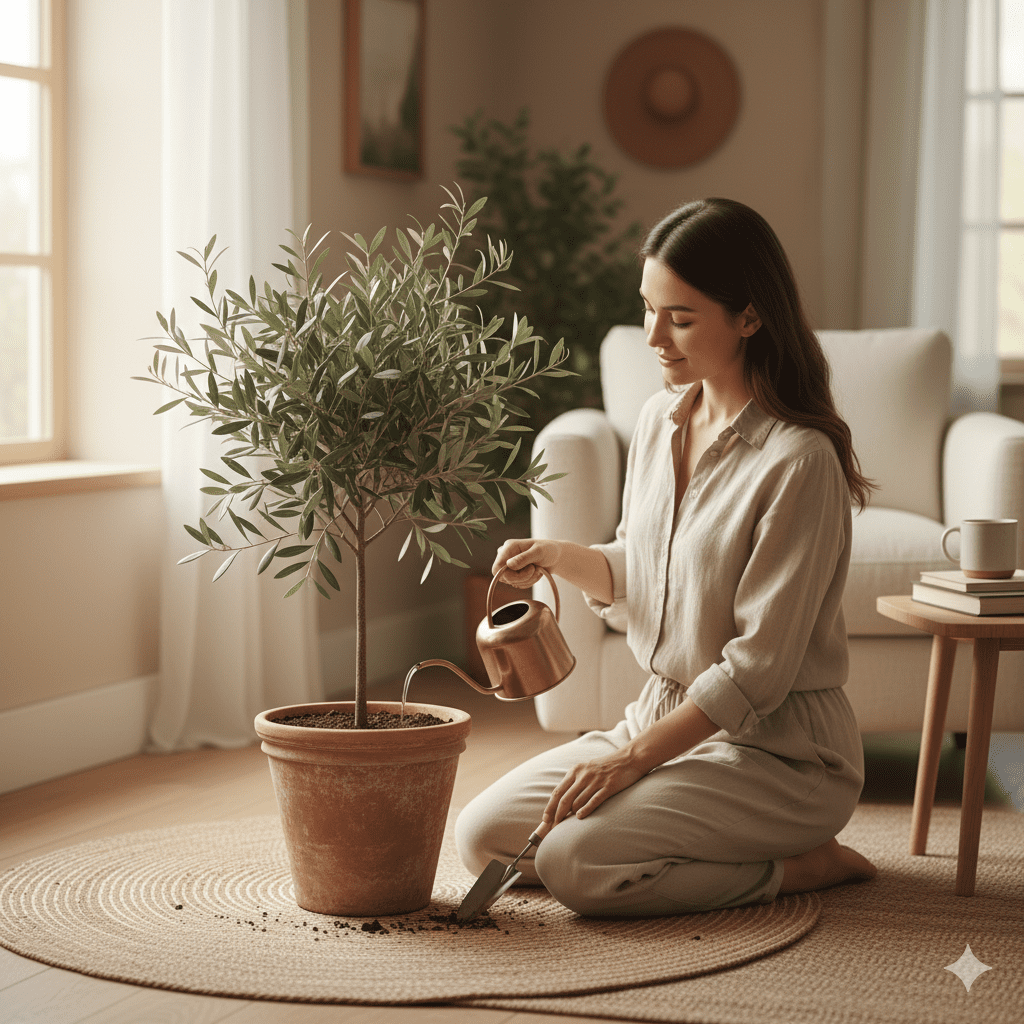
Although olive trees are drought-tolerant, this does not mean they like to be ignored. The key to watering is balance. Olive trees prefer deep watering that allows moisture to reach the roots, followed by a period of drying out. They do not tolerate consistently wet soil, which can suffocate the roots and lead to fungal diseases.
A good rule of thumb is to water your olive tree when the top 2–3 inches of soil are completely dry. This interval varies based on climate, pot size, and whether the tree is indoors or outdoors. For example, many gardeners wonder how often to water an olive tree in summer.
During hot weather, watering once a week may be necessary, especially for potted trees that dry out faster. In cooler months, especially winter, watering reduces significantly; sometimes to only once every two or three weeks.
Overwatering is one of the most common mistakes in olive tree care. Symptoms include soft leaves, mushy stems, and browning foliage. If you suspect overwatering, reduce your schedule and ensure the pot drains properly.
Choosing the Right Soil
Olive trees naturally grow in rocky, gritty, and nutrient-poor soil in the Mediterranean. This means they are adapted to draining quickly and prefer soil that does not trap moisture. When growing an olive tree in a pot, always use well-draining soil, ideally a mix designed for citrus trees or one enhanced with perlite, pumice, or coarse sand.
Good soil helps prevent root rot, allows oxygen to reach the roots, and encourages strong anchoring. If your soil stays wet for more than two days, it’s time to amend the mixture or repot your tree entirely.
Best Fertilizer for Olive Trees
Even though olive trees are not heavy feeders, they do benefit from a steady supply of nutrients during their active growing season. The best fertilizer for olive trees is typically a balanced NPK fertilizer, such as 10-10-10, or a citrus-specific fertilizer that supports leaf and fruit development.
Fertilizing every 4–6 weeks from spring through late summer helps encourage new growth, healthier leaves, and better fruit production. Avoid fertilizing during winter because the tree goes dormant and cannot use the extra nutrients, which may stress the roots.
How To Care For Basil Plant Indoors
15 Best Indoor Plants for Cold Temperatures
How to Prune an Olive Tree
Pruning is one of the most important but misunderstood aspects of olive tree care. Proper pruning helps increase airflow, reduce disease risk, and shape the tree into a fuller, more attractive form. If you want your olive tree to produce fruit, pruning is even more essential because olives grow on the previous year’s wood.
So when is the best time to prune an olive tree?
The ideal period is late winter to early spring, just before new growth begins. This ensures the tree has the entire growing season to develop new branches and leaves.
When pruning, focus on removing any dead, damaged, or crossing branches. Thin out clusters that may be too dense, allowing light to penetrate the canopy. For indoor trees, pruning also helps control height, making the tree easier to manage in smaller spaces.
How to Care for an Olive Tree Indoors
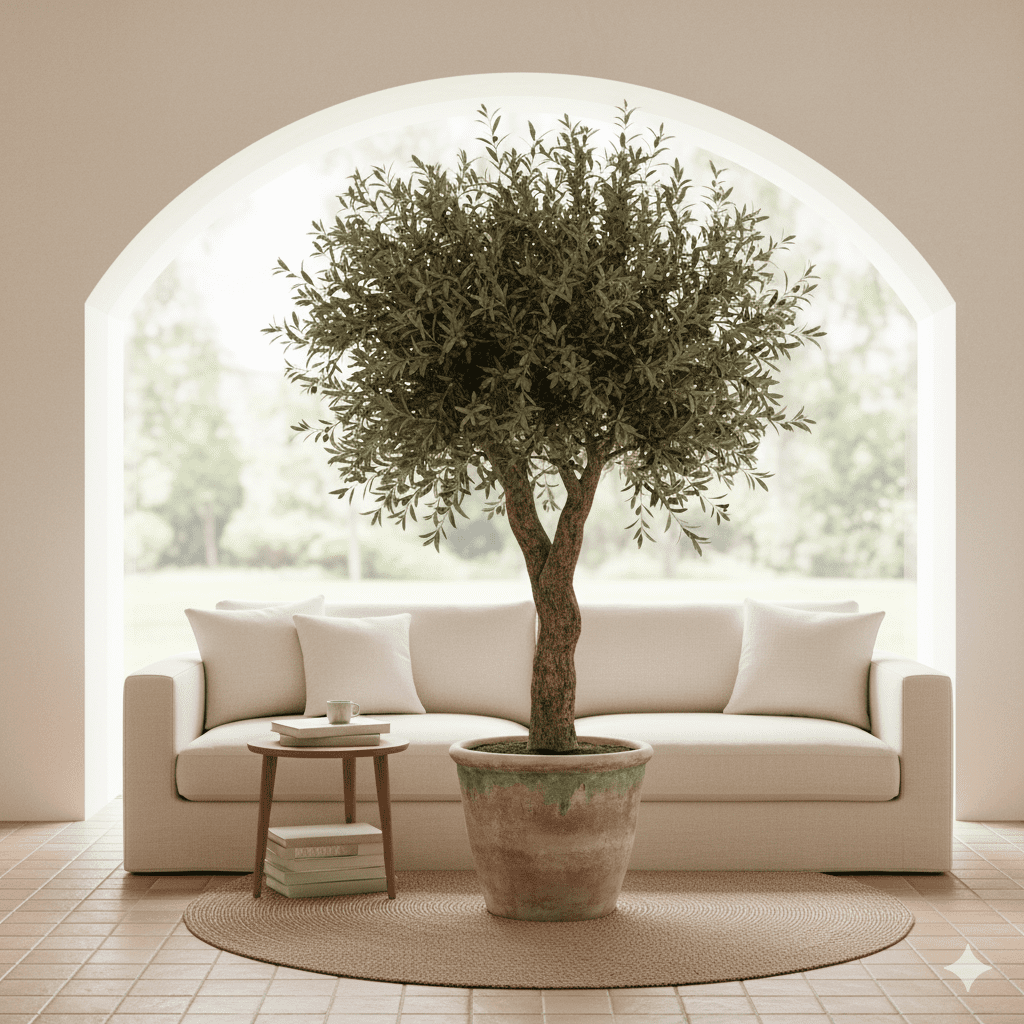
Indoor olive tree care requires more attention because indoor environments are usually less ideal than outdoor climates. However, with the right conditions, your indoor olive tree can remain lush and beautiful year-round.
Selecting the Perfect Pot for Indoor Olive Trees
Indoor olive trees should be planted in pots that provide excellent drainage. A pot with multiple drainage holes is essential for preventing standing water around the roots.
Many plant lovers prefer terracotta pots because they are porous and help evaporate excess moisture more quickly, reducing the risk of overwatering. When choosing a pot, select one that is 10–12 inches wide to give the roots room to expand.
How Much Sun Does an Azalea Plant Need?
Indoor Light Conditions
Indoor olive trees must be placed in the brightest spot in your home, typically near a south-facing window where sunlight is strongest. It’s helpful to rotate the pot once every week so all sides of the tree receive equal sunlight.
If your home lacks natural light, using an LED grow light for 8–12 hours a day can make a big difference. Without enough light, indoor olive trees may shed leaves, stop growing, or become weak and spindly.
Can Succulents Survive In An Air Conditioned Room?
Watering Indoor Olive Trees
Watering indoors tends to be less frequent compared to outdoor care because indoor environments are more controlled. The key is to check soil moisture consistently. Wet or soggy soil is a danger sign.
Always let the soil dry out between watering sessions. If your home is particularly dry, especially during winter, you may lightly mist the tree once a week to prevent leaf dehydration; though olive trees generally don’t require high humidity.
How to Care for Olive Trees Outdoors
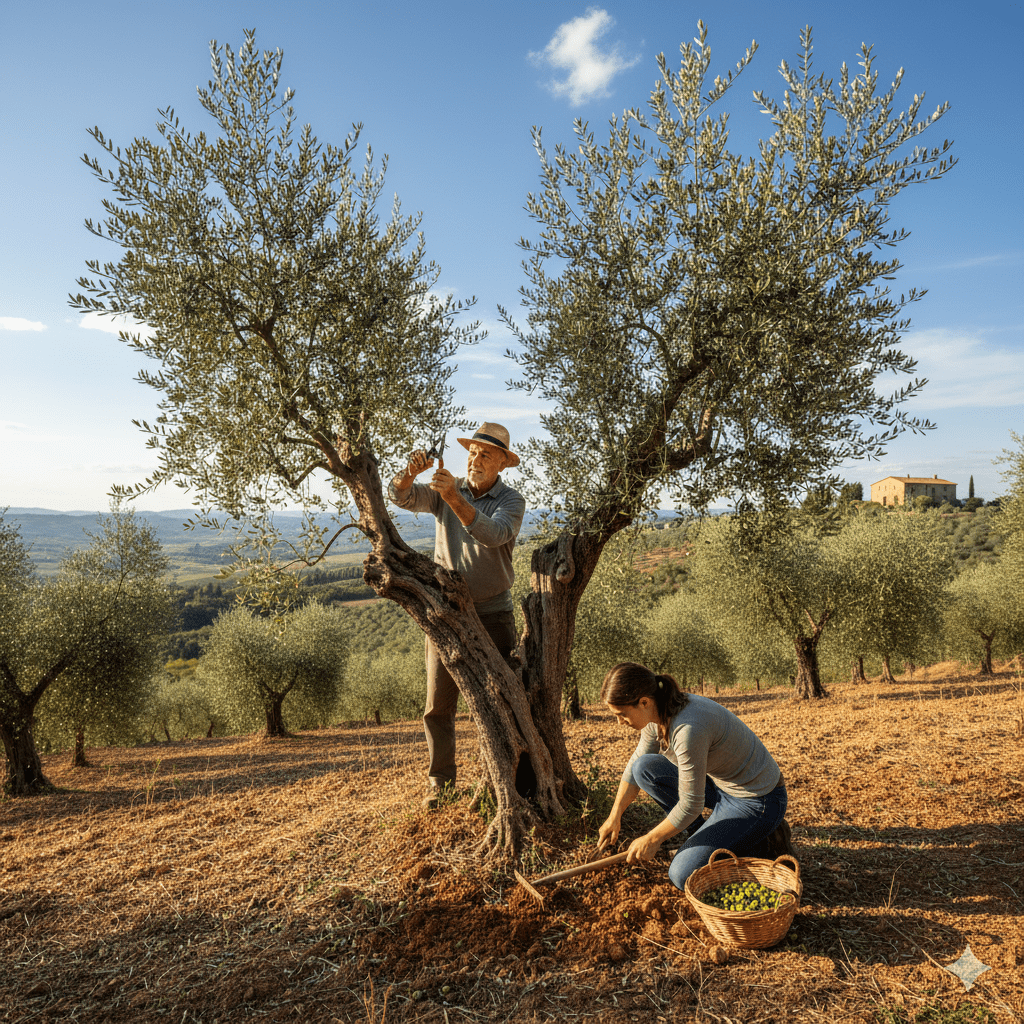
Outdoor olive tree care is often easier, especially in warm climates where sunlight is abundant. However, there are still essential steps you must follow to keep your tree thriving.
Sunlight and Placement in the Garden
Olive trees need as much sun as possible to grow vigorously. Plant them in an open area where they are exposed to direct sunlight for most of the day. Avoid shady corners or places where taller trees may cast long shadows. Strong sunlight promotes healthy leaves, sturdy trunk development, and better flowering and fruiting.
Outdoor Watering Routine
Outdoor olive tree watering depends largely on your climate. Newly planted olive trees need deep watering once a week until the roots establish. Once established, they require significantly less, sometimes only every two or three weeks. However, during extremely hot summers, watering once a week prevents dehydration and leaf scorch.
8 Reasons Why Your Umbrella Plant Is Dropping Leaves?
How to Overwinter an Olive Tree in Cold Climates
Olive trees are not naturally suited to freezing temperatures. Their ideal climate is warm and dry, and prolonged exposure to frost can severely damage the leaves and branches. If you live in a cold region, learning how to overwinter an olive tree in a cold climate is crucial.
For potted trees, the best approach is to bring them indoors or into a protected greenhouse before the first frost. Outdoor trees can be protected using frost cloths, burlap wraps, and thick layers of mulch to insulate the roots. Water sparingly during winter because the tree’s growth slows significantly.
Troubleshooting Common Olive Tree Problems
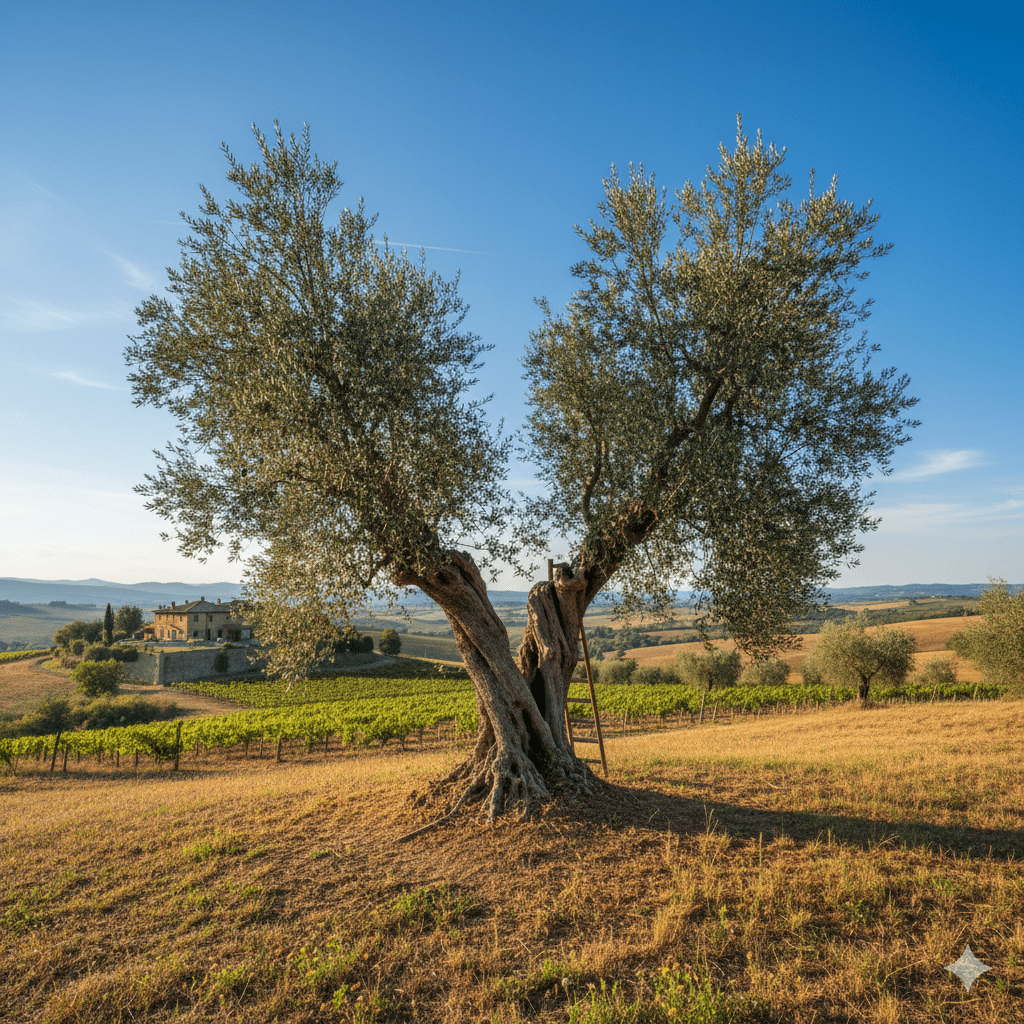
Even with great care, your olive tree may occasionally show signs of stress. Understanding the symptoms early helps prevent serious damage.
Why Are My Olive Tree Leaves Turning Brown?
Brown leaves are one of the most frequent concerns among olive tree owners. The causes vary, but the most common reasons include underwatering, overwatering, poor drainage, sudden temperature shifts, and salt buildup in the soil.
If your tree is indoors, cold drafts from windows or air conditioners may also contribute. The best solution is to adjust your watering schedule, flush the soil if necessary, and reassess where the tree is placed.
Common Pests on Olive Trees and How to Manage Them
Olive trees are relatively pest-resistant, but they can still be affected by insects such as scale, mealybugs, spider mites, and olive fruit flies. These pests cause leaf drop, sticky residue, and weakened growth.
Spraying the leaves with neem oil once a week is an effective natural remedy. For severe infestations, horticultural soap or systemic treatments may be required.
How to Encourage an Olive Tree to Fruit
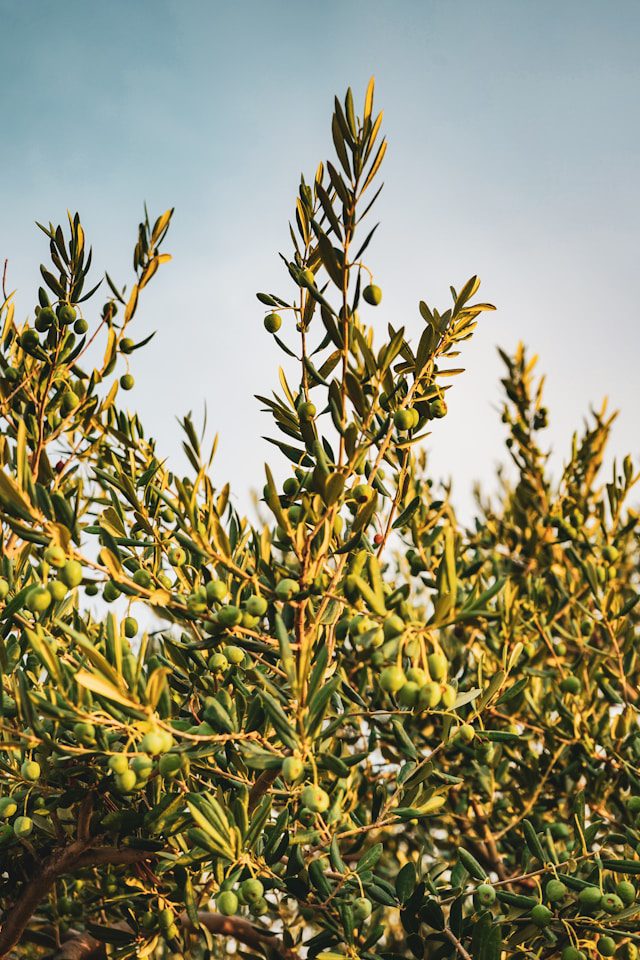
Many plant owners dream of harvesting their own olives, but fruiting requires specific conditions. For an olive tree to produce, it needs plenty of sun, consistent watering during the growing season, proper annual pruning, and the right fertilizer at the right time.
Some olive varieties also require a certain number of “chill hours” (cool nighttime temperatures), which means indoor-only trees may not fruit unless moved outside periodically.
Conclusion
Olive trees are beautiful, resilient plants that can thrive indoors or outdoors with proper care. From watering techniques to pruning, sunlight, fertilizing, and winter protection, these olive tree care tips will help your tree grow strong and healthy year-round. Whether you’re a beginner or an experienced plant lover, following this guide will ensure your olive tree stays vibrant, green, and flourishing.
